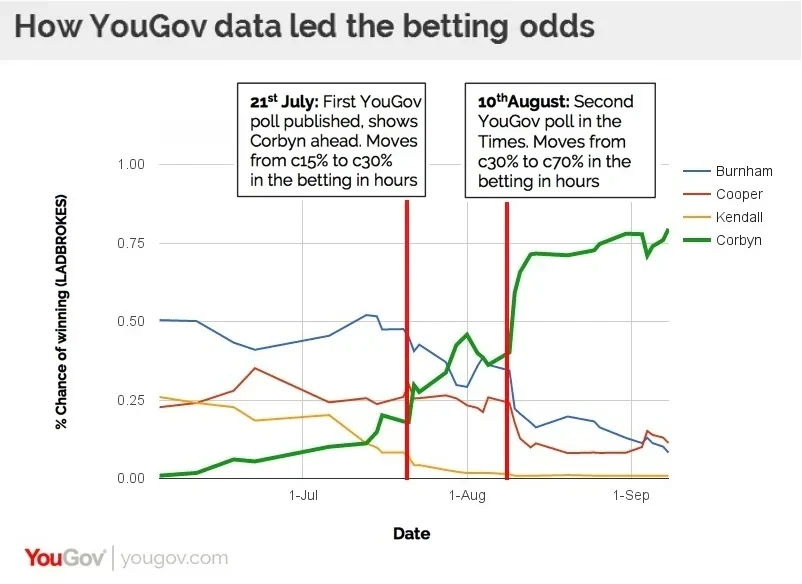It is fashionable these days to say that “if you really want to know what is going to happen just look to the betting odds. Money is smarter than pollsters.” When the next person trots out the tired old arguments about “the wisdom of crowds,” point them to Jeremy Corbyn’s victory in the Labour leadership contest. It provides some of the clearest proof possible that betting odds follow the mainstream narrative rather than being a crystal ball foreseeing future events.
On 21st July YouGov reported that Jeremy Corbyn had stormed into the lead in the contest with 43% of first preference votes. On 10th of August (just before voting commenced – we don’t publish election data after voting has started) we said that Corbyn was set for a knock-out blow, claiming 57% - and on Saturday he was declared the winner with 59.5%.
A look at the Ladbrokes’ odds over the course of the contest shows clearly why Corbyn went from being a long-shot bet to odds-on favourite.

Before we published our first research into the shape of the contest, Jeremy Corbyn was still third favourite to be leader. Within hours of that data being published the odds had been slashed and he became second favourite.
The effect of our second piece of research into the contest was even more dramatic, prompting the odds of a Corbyn victory to move from c40% to c70% within a few hours. YouGov’s research shifted these odds – that is the power of quality data.
On one occasion – May this year – we were wrong. But the bookies were even more wrong. And think back to December 2011. Everybody now says that it was inevitable that Tesco would take a tumble, but readers of this column will know that when I predicted the decline of sales the share price had been rock-solid for a year and it was a full month before a third of the value was knocked off its stock price. The fact is that people don’t know much without good data.
This article originally appeared in City AM
Image from PA









